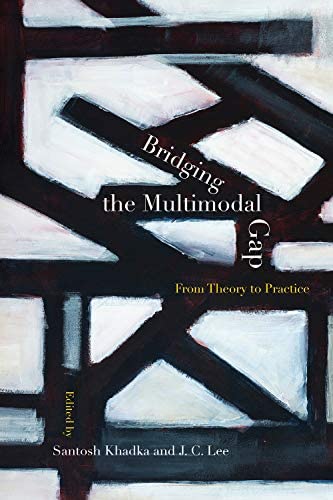Bridging the Multimodal Gap: From Theory to Practice
ed. Santosh Khadka & J. C. Lee
Utah State University Press, 2019
ISBN: 978-1607327967, 302 pp., $35.95

Many instructors are seeking ways to shift from predominately alphabetic texts and integrate multimodal assignments into their writing curriculum. There is a plethora of literature (Kress, 2009; Shipka, 2011; Takayoshi & Selfe, 2007) that provides the theoretical grounding for such a pedagogical transition which explicates the benefits and advantages of such a move. In their 1996 publication, "A Pedagogy of Multiliteracies: Designing Social Futures," the New London Group advocated for the inclusion of and attention to multimodal composing in academic composing settings to adhere to the needs of incoming students. Since then, compositionists have worked to answer this call through their scholarship and teaching. However, some of us struggle to find where to start when attempting to translate multimodal theory into praxis. Other instructors may get to the implementation stage and encounter unanticipated obstacles and consequences for them and their students. How do they, or we, negotiate and work through these aforementioned problems?
The edited collection Bridging the Multimodal Gap: From Theory to Practice (2019) guides readers through navigating the aforementioned tensions. In this compilation, editors Santosh Khadka and J. C. Lee assemble various chapters written by multimodality proponents who celebrate, lament, and caution readers of the highs and lows of teaching multimodality. Given the quite literal title of the book, Khadka and Lee intend to fill "the uneasy gap between theory and practice" (p. 3) as it pertains to multimodal writing instruction. If you are looking for a step-by-step multimodal teaching guide, this is not it. Instead, the authors included in this collection provide illustrations of their own personal implementation and integration of multimodality into their teaching which could potentially serve as a frame for readers' own attempts in their classrooms.
Bridging the Multimodal Gap: From Theory to Practice is organized into four sections with an introduction and afterword chapter. Each section focuses around a central theme that "bridges" all of the chapters' arguments and illustrations together. Section I centers around multimodal-process work. Section II is concerned with composing across media. Section III discusses affordances, learnings, and challenges of the multimodal classroom space. Section IV emphasizes multimodal assessment. The buttons above link to outlines of the sections, which provide summaries of the included chapters. Depending on their needs and reading desires, viewers of this review can navigate to sections that most closely align with their preferences. Linear navigation of this site is not necessary for comprehension of the text.
To navigate this review, a drop-down list will appear when the reader hovers over the "Review" tab. Each page includes a brief synthesis of the included contributions in the section, a list of all chapter titles, and a brief summary of each piece from the text.